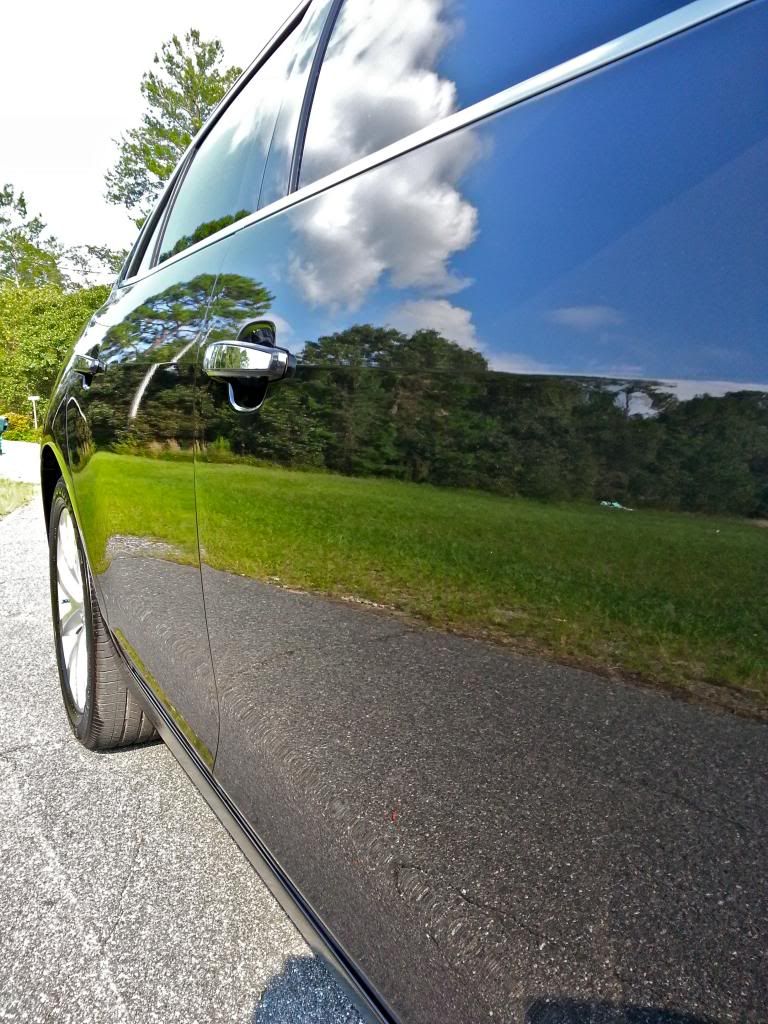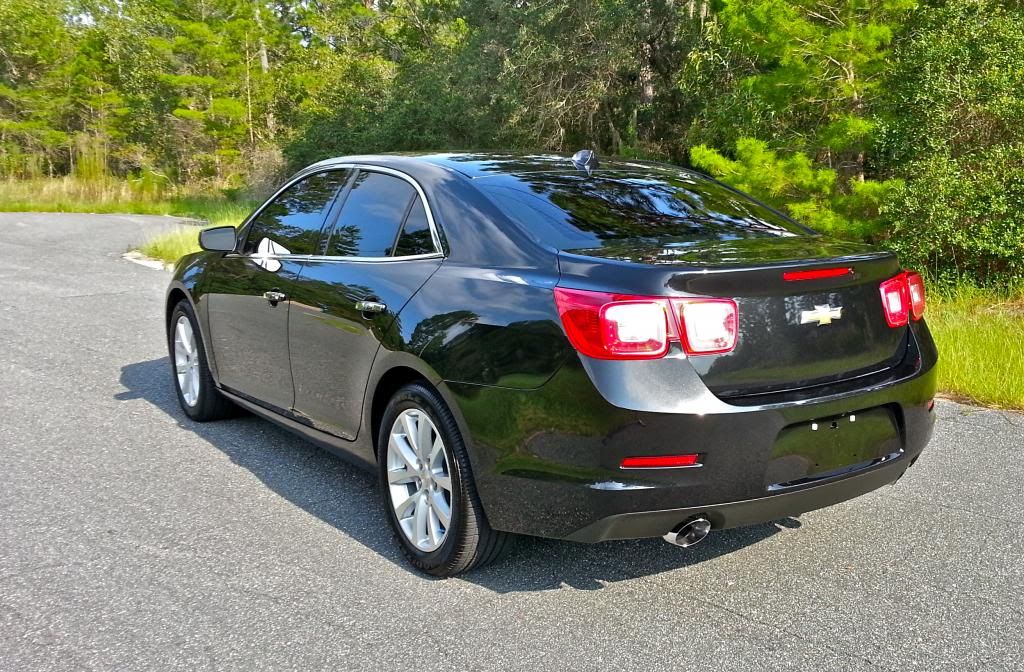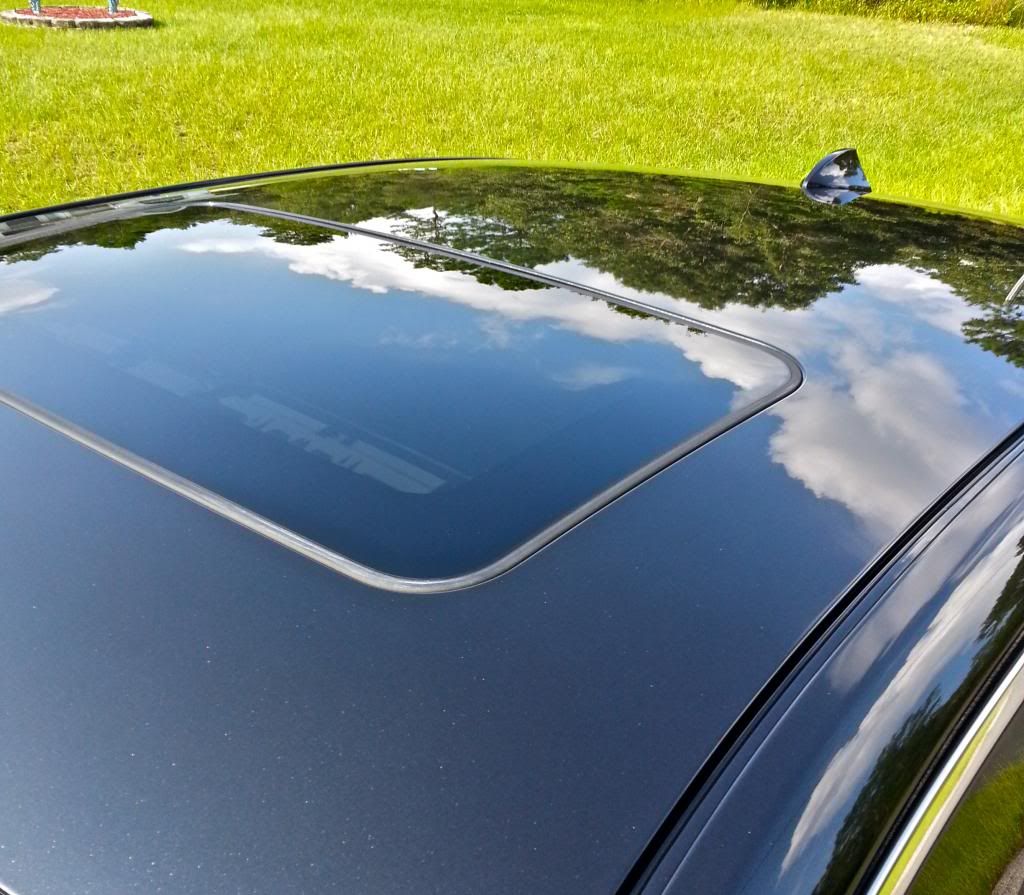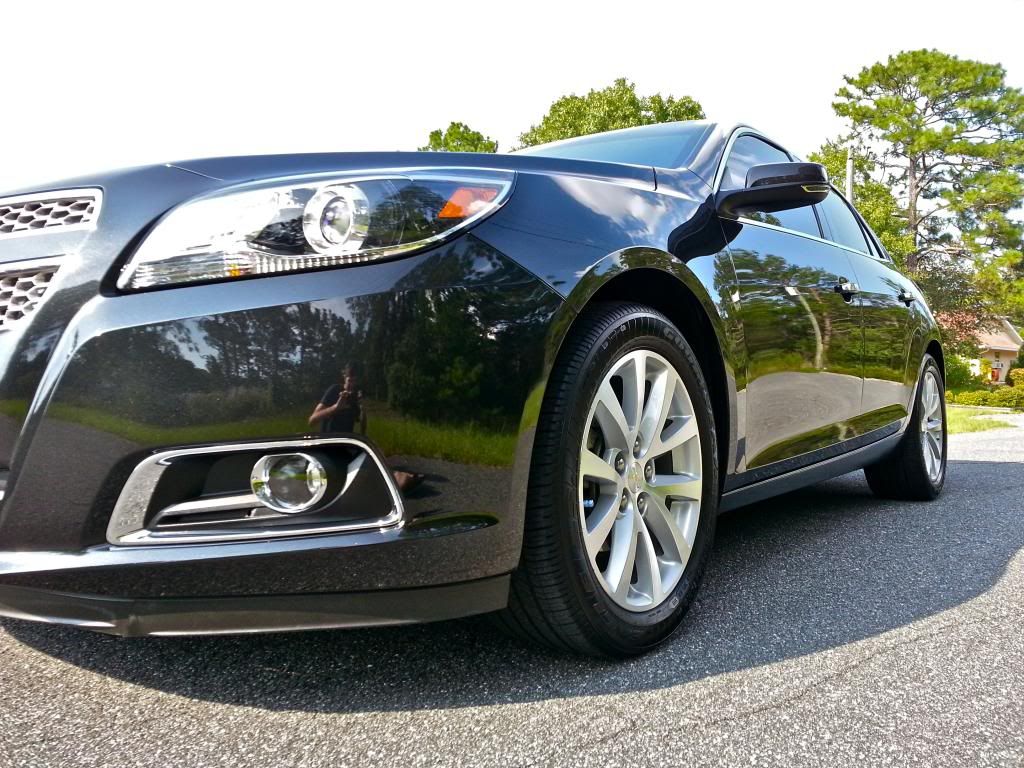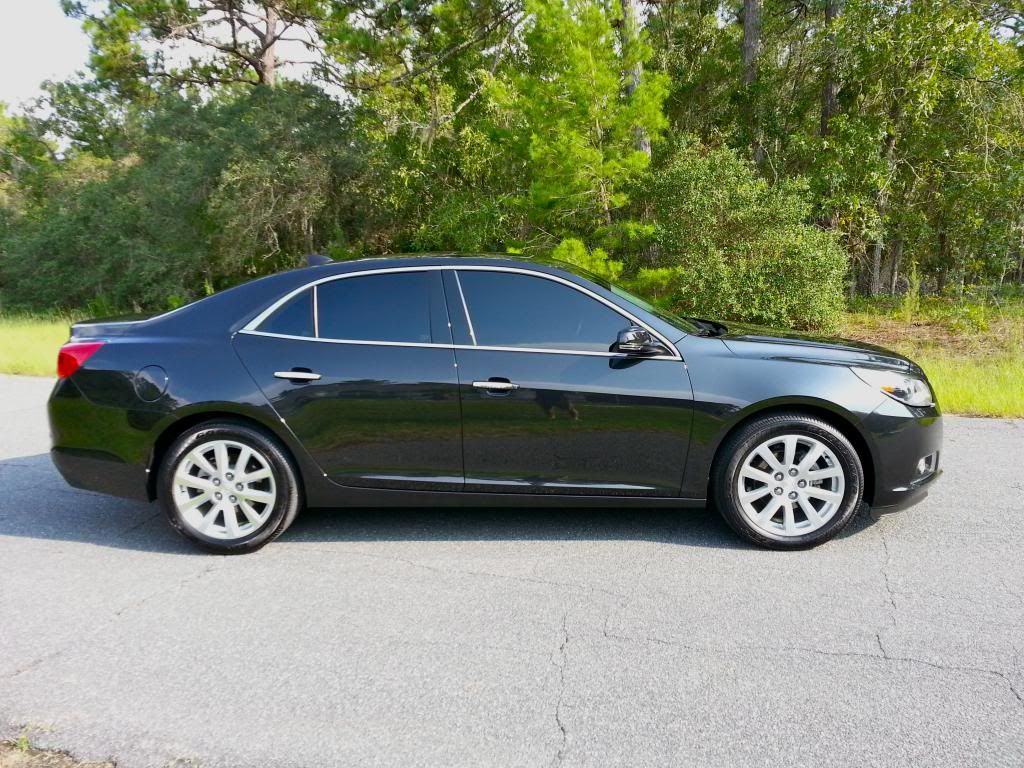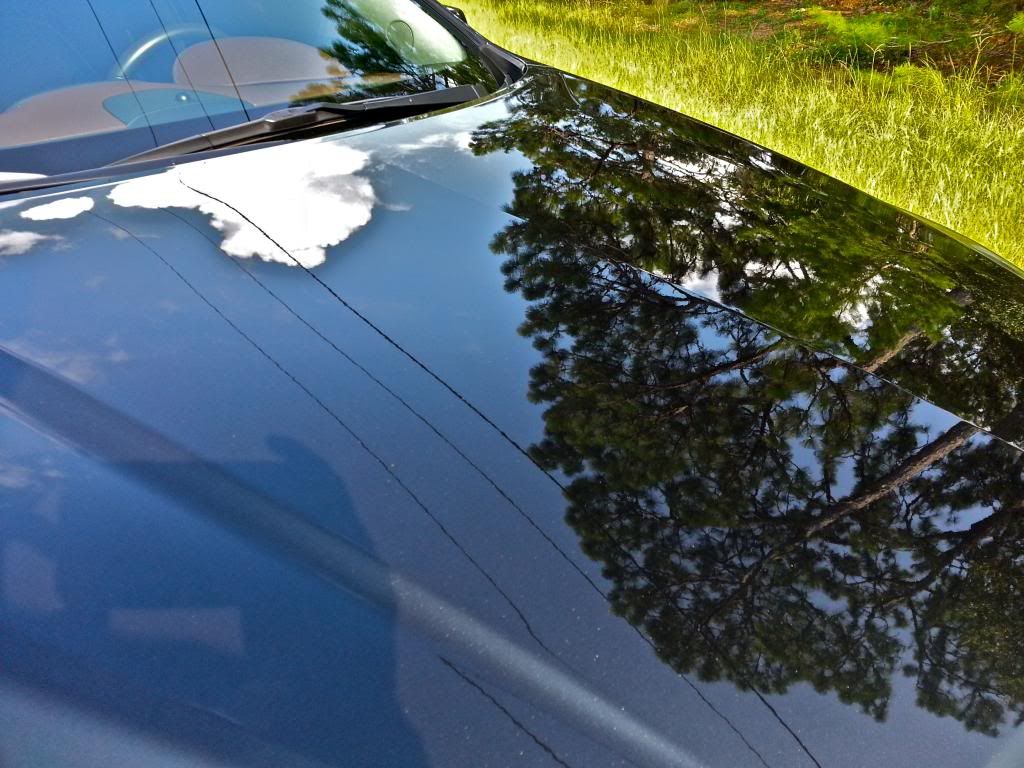I read a lot about people asking how to remove an LSP, whether it be wax, sealant, etc. I have found very few answers, besides dedicated paint cleaners and decided to do my own side by side comparison. I hope this helps those of you who are looking for different ways to strip off these products, whether it be for a new application or just to not clog up the pads.
As you see here, I started with my personal vehicle. 2013 Malibu LTZ, Granite Black Metallic. I planned on (and did) stripping everything, polishing, jeweling, then sealing with 2 coats of Wolfgang Deep Gloss Paint Sealant. It is normally not in such a state but when I hurt my foot 2 weeks ago, I started parking outside my garage to let the dirt and pollen pile up.
The LSP that was currently on is a 3-4 month old application of Wolfgang Fuzion Wax. I really want it known that this is not how my car normally looks, it was painful to let it get to this level.
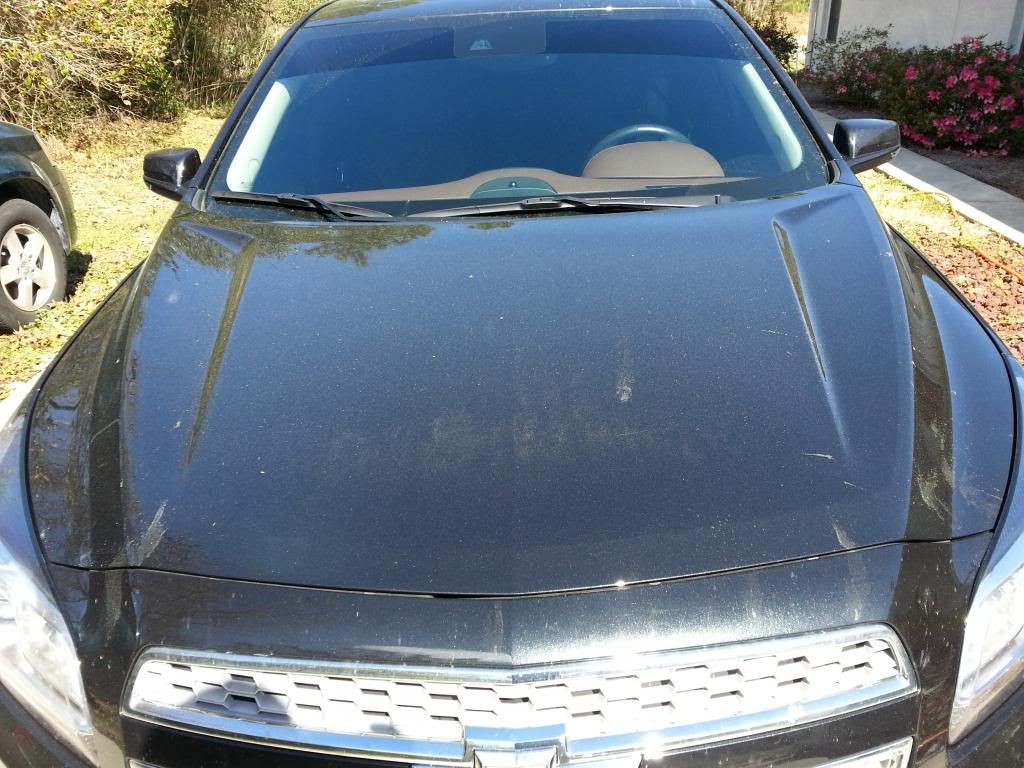


You can see the starting point is pretty rough. I taped up the four section that I planned on doing and then spray it with water to get a control. This is how the wax was holding up
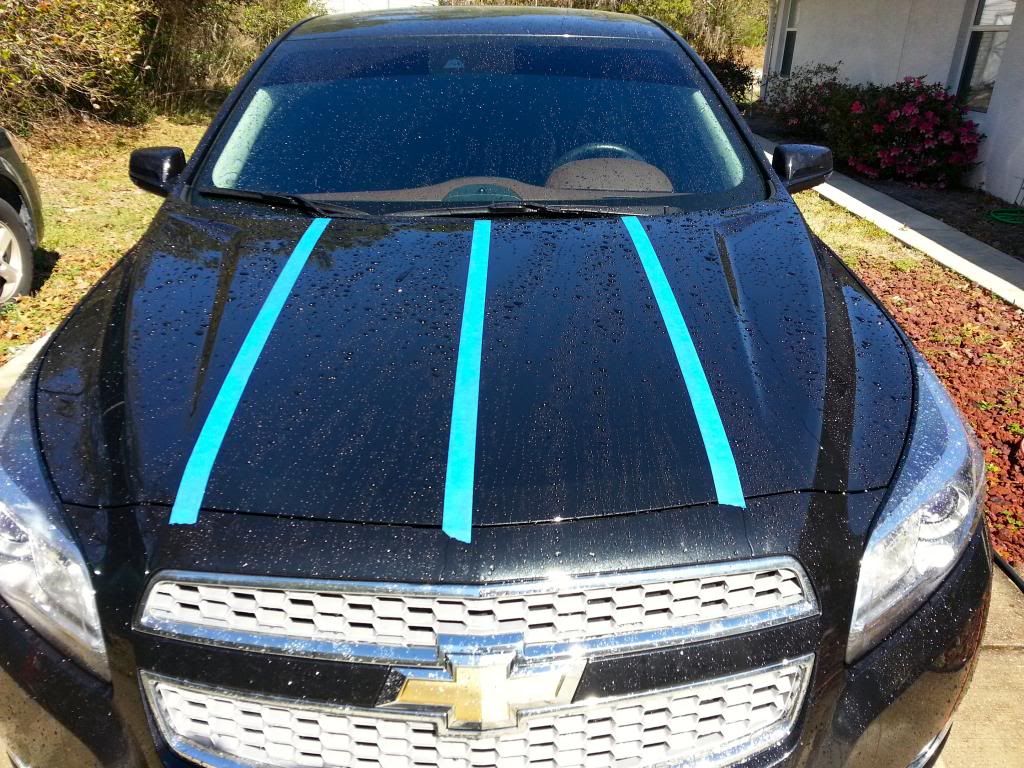
Here were the products I was going to be using.
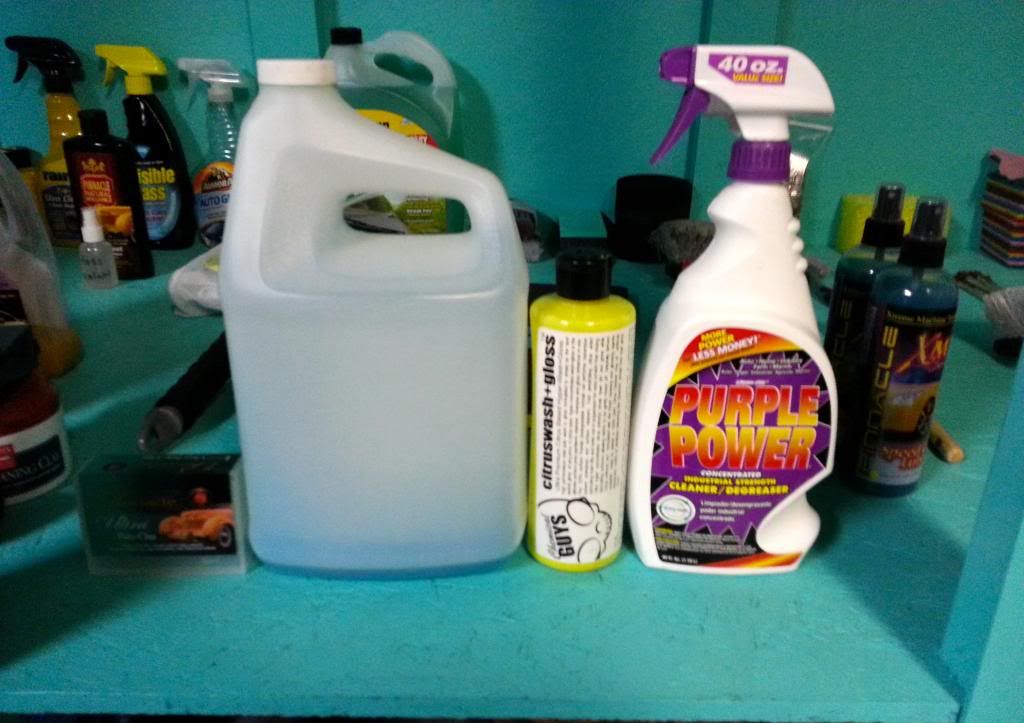
The big unlabeled bottle is Dawn Dish soap.
I worked from Right to Left. The most right section was
Purple Power Paint Safe Degreaser
As you can see, it fully removed the wax and left it with absolutely no beading ability at all.
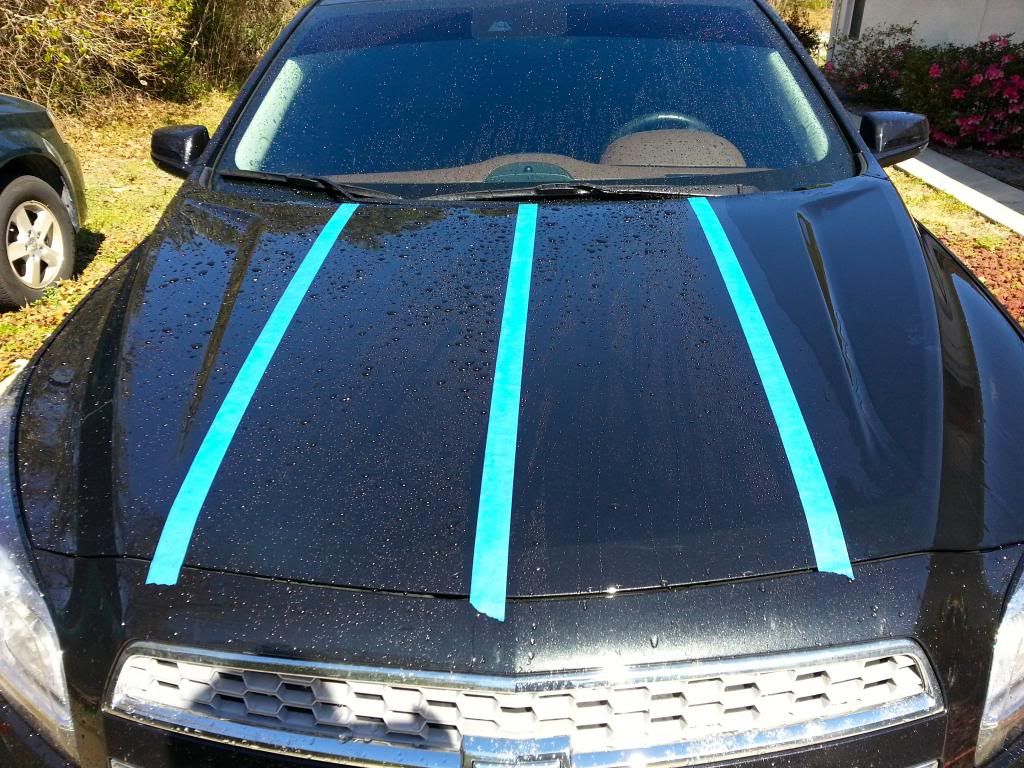
Next section was CG Citrus Wash and Gloss. I used a strong amount, literally pouring some onto the hood and cleaning it with a microfiber, as I did with all the sections (I would normally not do this, but in the name of science, and since I was doing a full 2 step correction afterwards, added to that fact that it was nearly pure lubricant...). It did pretty well, I expected more from it. By the way, I used a blocker to prevent any water or soap from getting into other areas.
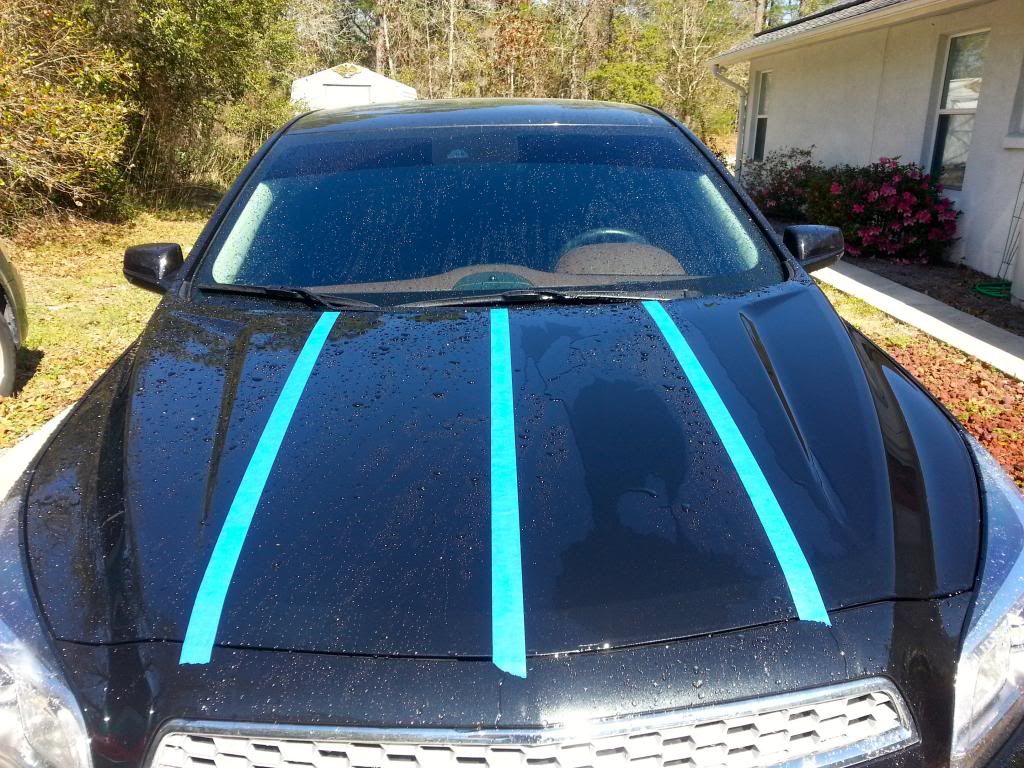
My next section was with Dawn dish washing soap. It was definitley better than the section done with the CG soap, but no where near as good as the APC degreaser.
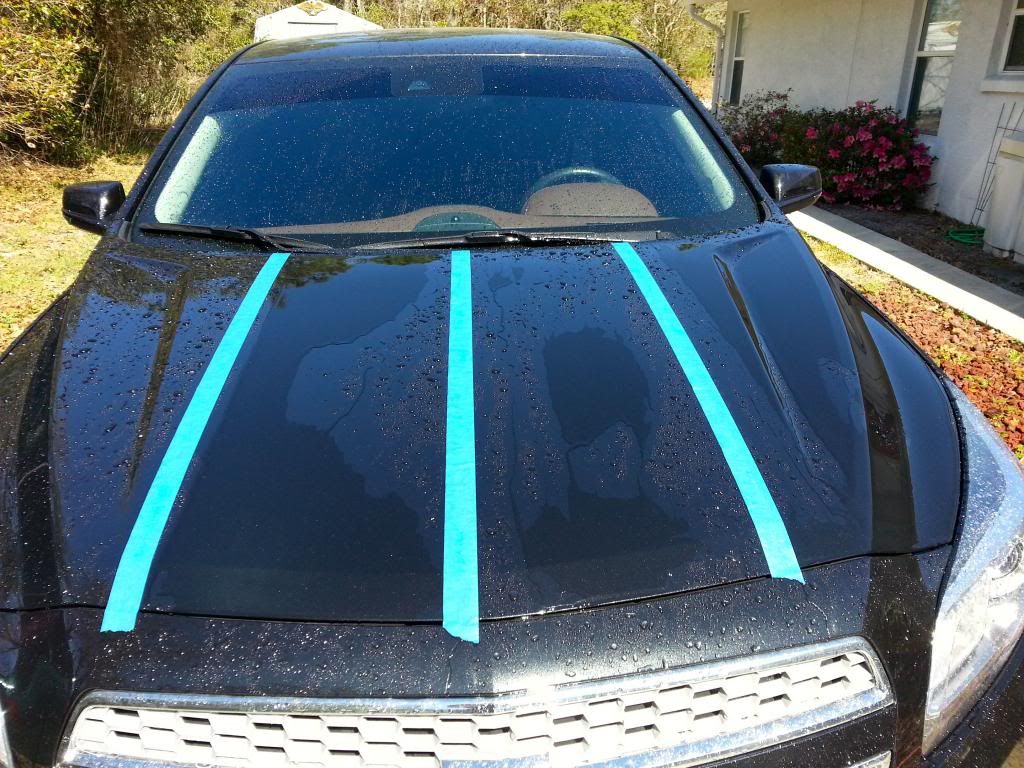
The final area was Dawn dish soap followed by Pinnacle Ultra Poly-clay. This area retained a little bit of its beading abilities, but near fully lost its ability to sheet any of the water off. I feel as though I would put it in second place in this test.
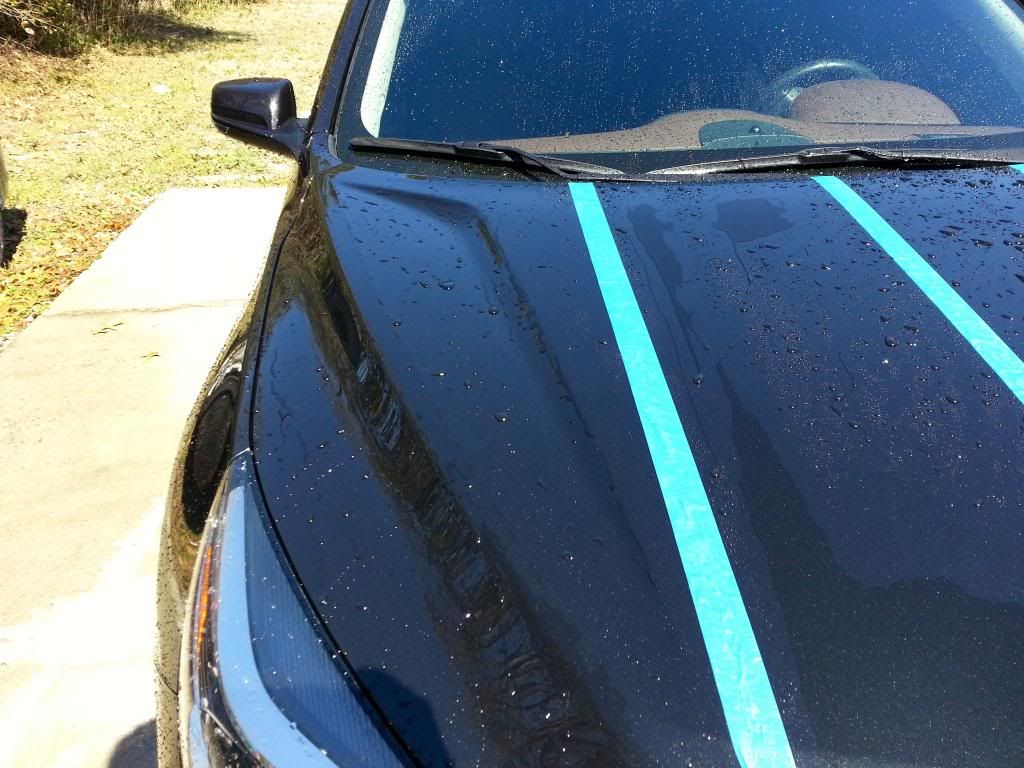
Here are the finished areas without any tape.

I hope that this helps clear up any questions about the cleaning abilities of different soaps. I know that Dawn is frequently tossed around as a safe paint cleaner (and to me, especially when followed with a clay, it can be).
As you see here, I started with my personal vehicle. 2013 Malibu LTZ, Granite Black Metallic. I planned on (and did) stripping everything, polishing, jeweling, then sealing with 2 coats of Wolfgang Deep Gloss Paint Sealant. It is normally not in such a state but when I hurt my foot 2 weeks ago, I started parking outside my garage to let the dirt and pollen pile up.
The LSP that was currently on is a 3-4 month old application of Wolfgang Fuzion Wax. I really want it known that this is not how my car normally looks, it was painful to let it get to this level.



You can see the starting point is pretty rough. I taped up the four section that I planned on doing and then spray it with water to get a control. This is how the wax was holding up

Here were the products I was going to be using.

The big unlabeled bottle is Dawn Dish soap.
I worked from Right to Left. The most right section was
Purple Power Paint Safe Degreaser
As you can see, it fully removed the wax and left it with absolutely no beading ability at all.

Next section was CG Citrus Wash and Gloss. I used a strong amount, literally pouring some onto the hood and cleaning it with a microfiber, as I did with all the sections (I would normally not do this, but in the name of science, and since I was doing a full 2 step correction afterwards, added to that fact that it was nearly pure lubricant...). It did pretty well, I expected more from it. By the way, I used a blocker to prevent any water or soap from getting into other areas.

My next section was with Dawn dish washing soap. It was definitley better than the section done with the CG soap, but no where near as good as the APC degreaser.

The final area was Dawn dish soap followed by Pinnacle Ultra Poly-clay. This area retained a little bit of its beading abilities, but near fully lost its ability to sheet any of the water off. I feel as though I would put it in second place in this test.

Here are the finished areas without any tape.

I hope that this helps clear up any questions about the cleaning abilities of different soaps. I know that Dawn is frequently tossed around as a safe paint cleaner (and to me, especially when followed with a clay, it can be).
